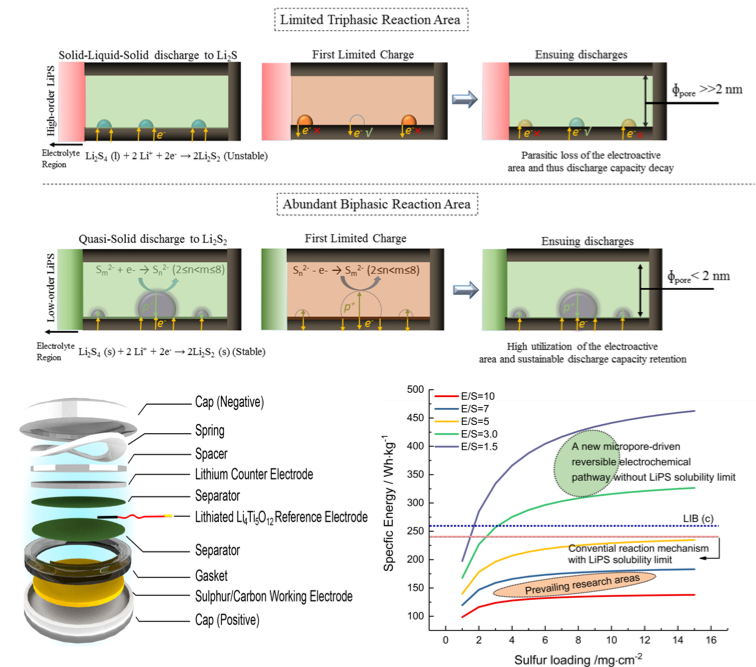
Scientific Achievement
Li2S2 is experimentally verified by ex-situ S K‐edge X‐ray absorption spectroscopy to be stable in the micropores during discharging in Li-S cells. A new reversible electrochemical pathway is thus proposed, based on the inherent self‐healing capacity for Li2S2, under lean electrolyte conditions.
Significance and Impact
Li2S2 is shown to strongly dictate highly reversible Li-S cells with high sulfur loadings under lean electrolyte conditions. Three-electrode coin cell design proposed to monitor the anode, cathode and total cell variation (impedance, viscosity, etc.) with cycling-a verified powerful tool to study Li-S cell under lean electrolyte conditions.
Research Details
- CV, CA, ex-situ XAS and discharge/charge curves results show the presence of Li2S2 in the microporous carbonaceous matrix during discharging and its self-healing attribute.
- Multinuclear solid state NMR results indicate that the depletion of solvent is the main cause of premature cell failure.
- In-situ lithium-metal anode impedance results suggest that different orders of lithium polysulfides can exert a significant influence on the lithium-metal anode impedance.

